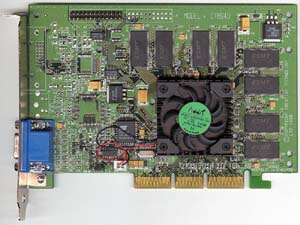NVIDIA GeForce 256 Part 1: To buy or not to buy
by Anand Lal Shimpi on October 11, 1999 5:07 PM EST- Posted in
- GPUs
After the initial announcement of the GeForce 256, a common misconception was made about the meaning of the number '256'. The 256 does not indicate a 256-bit memory bus; rather, it corresponds to the '256-bit QuadPipe Rendering Engine' that is more of an evolution of the TNT architecture than something that's revolutionary and brand new.
The 'QuadPipe' name comes from the four 64-bit pipelines that make up the rendering engine of the GeForce. With the core clock speed at 120MHz, this gives us a theoretical peak fill rate of 480M Pixels per second. The core clock speed is obviously lower than that of the TNT2 and TNT2 Ultra but the GeForce does more per clock cycle than the TNT2 and thus clock speeds cannot be compared. While the TNT2 can use its TwinNTexel engine to crank out 2 pixels in a clock cycle the GeForce 256 uses its QuadePipe Rendering Engine to do four in a single clock cycle.
The beauty of NVIDIA's architecture is that in a single textured game, it can process four pixels per clock cycle due to the four independent pipelines. But since most games are multi-textured this dream won't become a reality. In a game with two textures, the GeForce can crank out two multitextured pixels in one clock cycle.
This also adds a new feature to overclocking the GeForce, but we'll discuss that a little later. For now, the main thing you need to understand is that although the GeForce runs at a 20% slower clock speed than the TNT2 Ultra, its QuadPipe Rendering Engine provides for a 60% greater theoretical fill rate than the TNT2 Ultra (480M Pixels vs 300M Pixels).











1 Comments
View All Comments
2016boyGPU - Monday, April 4, 2016 - link
Man i hope you still alive bro1999 i miss
Xoxo